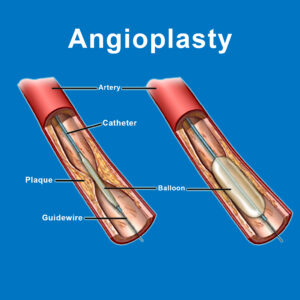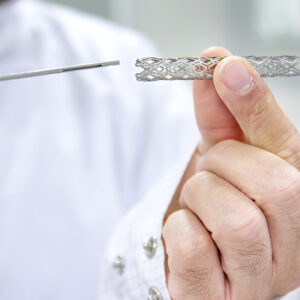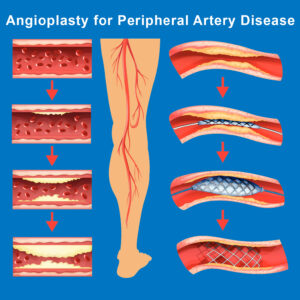Angioplasty
Peripheral artery disease is a common circulatory problem where vessels that carry blood from your heart to the rest of your body become narrowed or blocked.
This means there is not enough blood flowing to your extremities. Treatment for PAD is usually lifestyle changes and medication. In some cases, it may be necessary to undergo a procedure called an angioplasty.
What is an ANGIOPLASTY?
Angioplasty is a minimally invasive procedure that is done in an outpatient setting. Medication is given through an IV in your arm to help your relax or put you in a twilight sedation throughout the procedure.
An angiogram will be performed and it is when an Interventional CardioVascular Specialist, Interventional Radiologist or Vascular Surgeon puts a small tube called a catheter into your artery.
Once the catheter is in place, the doctor guides the catheter to the area of narrowing or blockage. A contrast is injected into your artery in order to visualize the blood flow with the use of x-ray at the same time.
The area of concern is then seen and a small balloon is placed in that area. The balloon is then inflated in order to push plaque up against the wall of the artery. This allows the blood to be restored and to delivery oxygen-rich blood to the body’s muscles and tissues.
The balloon and catheter in your artery is then removed.
Recovery Time
Recovery from an angioplasty is only a few short hours at Vascular Institute. You will be monitored closely and then able to go home. It will be recommended to rest the remainder of the first day.
You will have some lifting and activity restrictions for up to 5 days. During this recovery period, you may experience mild soreness, bruising and/or discoloration of the skin where the artery was punctured and the catheter was inserted.
You will be sent home with discharge instructions after the procedure on specific instructions to follow.



